9 positions available at STACK within the OTPaas Framework -
- OTPaaS, addressing the Cloud to IoT continuum for the industry sector through a dedicated software stack.
- Opening positions
- 1. Decentralized orchestrations of edge infrastructures
- 2. Contribution to the safety and efficiency of decentralized reconfigurations
- 3. Infrastructure as Programs
- 4. Model of Energy consumption in Cloud, Edge and Far Edge devices in the IoT to Cloud continuum.
- 5. Placement in Cloud, Edge and Far Edge devices in the IoT to Cloud continuum.
- 6. A holistic approach to reduce the carbon footprint of Fog applications.
- (FILLED) 7. Advanced AI for infrastructures and applications in the IoT-Cloud continuum.
- (FILLED) 8. Advanced security and privacy for the IoT-Cloud continuum
- 9. DevOps Research engineer
OTPaaS, addressing the Cloud to IoT continuum for the industry sector through a dedicated software stack.
In the context of the OTPaaS project, the STACK research group (http://stack.imt-atlantique.fr) from IMT Atlantique have 9 opening research positions for a duration between 18 and 36 months.
Context
Ensuring the continuity between cyber physical systems deployed at the edge of the network and regional/national data centers is an important obstacle to the massive and complete digitalization of companies, in particular for the industry sector.
Funded under the French PIA-4 framework stratégie d’accélération Cloud for a duration of 36 months with an overall budget of 56M€, the OTPaaS project targets the design and development of a complete software stack to administrate and use ‘‘Cloud to IoT’’ infrastructures.
The consortium brings together national and user technology suppliers from major groups (Atos / Bull, Schneider Electric, Valeo), SMEs / ETIs (Agileo Automation, Mydatamodels, Dupliprint, Solem, Tridimeo, Prosyst, Soben), and major French research institutes (CEA, Inria, IMT, CAPTRONIC).
Thanks to the diversity of the consortium, we aim to validate the relevance of the software stack through various industrial demonstrators. Those demonstrators will help us attract additional actors with the ultimate goal of being supported by ambitious industrialization programs after the project.
For further information, please see the OTPaaS website.
Opening positions
All vacancies are fixed-term contracts located in Nantes (France) and will come with the following benefits package:
- Partial reimbursement of public transport costs
- Possibility of teleworking (two days per week)
- Access to vocational training
- Social security coverage
- Salary: Monthly gross salary from 2800 euros according to diploma and experience
1. Decentralized orchestrations of edge infrastructures
- Position: Research Engineer/Postdoctoral researcher
- Level of qualifications required: PhD in Computer Science or equivalent
- Application deadline: ASAP (no later than Sept. 2022)
- Duration: 18 months
- Contact: adrien.lebre@imt-atlantique.fr
The current accepted research direction for developing a geo-distributed orchestrator consists in deploying one controller per “site” of the infrastructure and federating them through a brokering approach to give the illusion of a single coherent system. Due to frequent isolation between controller instances from the rest of the infrastructure (i.e., network disconnections), the federated approach presents a significant advantage: each site can continue to operate locally. However, existing controllers have not been designed to peer with other instances but rather in a quite stand-alone way in order to manage a single region. In OTPaaS, we will focus on the design of a generic API gateway that forwards requests between these instances according to the orchestration decisions. The service allows instances to be aware of each other each time it is needed in order to share, replicate or expand the resources they manage. For further information, please refer to [1] [2].
[1] Cherrueau et al., Geo-Distribute Cloud Applications at the Edge, in the 27th International European Conference on Parallel and Distributed Computing, Aug 2021 https://hal.inria.fr/hal-03212421/ [2] Delavergne et al., A service mesh for collaboration between geo-distributed services: the replication case, in Workshop on Agility with Microservices Programming, Jun 2021 https://hal.inria.fr/hal-03282425
2. Contribution to the safety and efficiency of decentralized reconfigurations
- Position: Research Engineer/Postdoctoral researcher
- Level of qualifications required: PhD in Computer Science
- Application deadline: ASAP (no later than Sept. 2022)
- Duration: 18 months
- Contact: helene.coullon@imt-atlantique.fr
The DevOps community has in recent years highly improved the set of languages to enhance the flexibility, the reuse, and the maintainability of deployment, reconfiguration, and management procedures of distributed software systems and applications. Among those languages some are specific to systems configuration, others are specific to the provisioning aspect on distributed infrastructures, and finally some offer more advanced orchestration and management abilities (e.g., updates, scaling). In any case a generic language and semantics to handle any type of reconfigurations does not exist in the literature, in particular when focusing on safety and efficiency aspects.
To handle massively geo-distributed infrastructures such as the one in OTPaaS reconfigurations should be fully automated and formalized so that human errors due to the scale or to the heterogeneity are avoided. Furthermore, such procedures should be as fast as possible so that the new state of the distributed system is quickly reached. We have in the past contributed to the formalism, safety and efficiency of reconfiguration procedures [1][2][3]. In OTPaaS we will push further these results when the reconfiguration is decentralized.
[1] Hélène Coullon, Didier Lime, Claude Jard. Integrated Model-checking for the Design of Safe and Efficient Distributed Software Commissioning. In iFM 2019, Bergen, Norway. https://hal.archives-ouvertes.fr/hal-02323641 [2] Maverick Chardet, Hélène Coullon, Simon Robillard. Toward Safe and Efficient Reconfiguration with Concerto. In Science of Computer Porgamming, 2021. https://hal.inria.fr/hal-03103714 [3] Simon Robillard, Hélène Coullon. SMT-Based Planning Synthesis for DistributedSystem Reconfigurations. In FASE 2022, Munich, Germany.https://hal.archives-ouvertes.fr/hal-03536643
3. Infrastructure as Programs
- Position: Postdoctoral Researcher
- Level of qualifications required: PhD in Computer Science
- Application deadline: ASAP (no later than Sept. 2022)
- Duration: 18 months
- Contact: jacques.noye@imt-atlantique.fr
Docker and Kubernetes are popular and powerful systems for automating the deployment, scaling and management of containerized applications. Unfortunately, they are usually operated via low-level description and scripting languages, without many static guarantees of correctness and with very limited structuring and reuse means [1]. On the other side of the spectrum, there are standards (eg TOSCA) and tools (eg Ansible) that have focused on somehow higher-level descriptions of services but on a ground that is not semantically solid by lack of an operational or theoretical target [2]. Finally, there is an on-going effort to develop well-founded configuration languages (Dhall, Nickel, Cue…) with some examples of already existing bindings to Kubernetes (eg Dhall [3]).
This study aims to study the trade-offs between these different approaches and see whether they can be usefully combined or improved upon in the specific context of Docker and Kubernetes while experimenting with proper programming support. There is no plan to conceive a new language but rather to rely on the principles of embedded domain-specific languages, domain-specific languages developed within an existing host language. Specifically, we will use the latest version of Scala, a language with advanced abstraction and extensibility facilities.
[1] Akon Rahman et al., Gang of Eight: A Defect Taxonomy for Infrastructure as Code Scripts, In Proceedings of the ACM/IEEE 42nd International Conference on Software Engineering (ICSE ‘20), May 2020.
[2] TOSCA Language Ad-Hoc WG Meeting, November 23, 2021. The discussion starts as follows: Chris: based on the discussions over the last several weeks, it is clear we do not yet have a common understanding of the basic TOSCA operational model.
[3] https://dhall-lang.org
4. Model of Energy consumption in Cloud, Edge and Far Edge devices in the IoT to Cloud continuum.
- Position: Research Engineer/Post-Doctoral researcher
- Level of qualifications required: PhD in Computer Science or equivalent
- Duration: 18 months
- Application deadline: ASAP (no later than Sept. 2022)
- Contact: jean-marc.menaud@imt-atlantique.fr, remous-aris.koutsiamanis@imt-atlantique.fr
Within the framework of OTPaaS, we will work on the energy modeling of Cloud and Edge infrastructures (from Huge Data centers to micro-infrastructure like Raspberry Pis and even IoT sensors). The aim is to create a model that can inform an intelligent placement system in charge of optimizing both the power consumption and the performance of applications.
On the first part, the modeling system, we want to continue our work on the energy modeling of server rooms (Data Center). In particular, we will rely on existing infrastructures (SILECS) to extract invariants on both the power consumption of servers and cooling systems. We also propose models on the electrical production systems and in particular on the photovoltaic panels.
Additionally, we would like to extend this work to Edge and Far Edge devices, which are the most likely part of the IoT to Cloud continuum to have energy availability limitations in addition to their computational constraints. The energy sources and management options in this space are very heterogeneous and variable (e.g. normal mains power, rechargeable and non-rechargeable batteries, supercapacitors, mini-PVs, RF harvesting, etc.) making modelling these apects both difficult and interesting.
Moreover, these computational constraints increase their need to communicate with other devices in order to fulfill their functions. While the energy consumption of these devices is still low in absolute per-device terms, their vast number multiplies their energetic impact. Finally, since they are often also mobile, they will have additional communication overheads for maintaining connectivity, using wireless communication which consumes more energy and is less reliable.
Therefore, in OTPaaS we will also investigate the energetic consumption of such devices and design models that capture the different operation goals (e.g. reliability, latency) in terms of energy consumption. These models can then be used to aid in the the placement of data and computation in these devices.
[1] Yewan Wang, David Nörtershäuser, Stéphane Le Masson, Jean-Marc Menaud, An Empirical Study of Power Characterization Approaches for Servers, in ENERGY 2019 - The Ninth International Conference on Smart Grids, Green Communications and IT Energy-aware Technologies, Jun 2019. https://hal.inria.fr/hal-02120589v2
[2] Yewan Wang, David Nörtershäuser, Stéphane Le Masson, Jean-Marc Menaud, Potential effects on server power metering and modeling, CloudComp 2018 : 8th EAI International Conference on Cloud Computing, Sep 2018 https://hal.inria.fr/hal-01869705
[3] B. Martinez, M. Montón, I. Vilajosana and J. D. Prades, The Power of Models: Modeling Power Consumption for IoT Devices, in IEEE Sensors Journal, vol. 15, no. 10, pp. 5777-5789, Oct. 2015, doi: 10.1109/JSEN.2015.2445094. https://ieeexplore.ieee.org/abstract/document/7122861
5. Placement in Cloud, Edge and Far Edge devices in the IoT to Cloud continuum.
- Position : Research Engineer/Post-Doctoral researcher
- Level of qualifications required : PhD in Computer Science or equivalent
- Duration: 18 months
- Application deadline: Jan. 2023
- Contact: jean-marc.menaud@imt-atlantique.fr, remous-aris.koutsiamanis@imt-atlantique.fr
Within the framework of OTPaaS, we will work on the energy modeling of Cloud and Edge infrastructures (from Huge Data centers to micro-infrastructure like Raspberry Pis and even IoT sensors). The aim is to use a model that can inform an intelligent placement system in charge of optimizing both the power consumption and the performance of applications.
We will extend the work done in the scientific workflow placement to the geo-distributed placement by taking into account the required performance (CPU, RAM, Latency, Bandwidth), the energy consumption and the energy availability.
We would also like to investigate the limits of the placement system, by attempting to make it flexible enough to be able to perform placement on devices of almost any capability profile, including low-power devices, devices with specialised compute capapbilities (like FPGAs, AI-acceleration co-processors, or GPUs), and devices with irregular energy availability (e.g. using energy harvesting).
In OTPaaS we aim to use the model developed as a part of the “Model of Energy consumption in Cloud, Edge and Far Edge devices in the IoT to Cloud continuum” position as the starting point for the placement system, with interactions between the two being strongly anticipated.
[1] Yunbo Li, Anne-Cécile Orgerie, Ivan Rodero, Manish Parashar, Jean-Marc Menaud, Leveraging Renewable Energy in Edge Clouds for Data Stream Analysis in IoT, in CCGRID 2017 : 17th IEEE/ACM International Symposium on Cluster, Cloud and Grid Computing, May 2017. https://hal.inria.fr/hal-01472358
[2] Emile Cadorel, Hélène Coullon, Jean-Marc Menaud, in CCGrid2020, the 20th International Symposium on Cluster, Cloud and Internet Computing, Nov 2020. https://hal.archives-ouvertes.fr/hal-02551733
6. A holistic approach to reduce the carbon footprint of Fog applications.
- Position: Research Engineer/Postdoctoral researcher
- Level of qualifications required: PhD in Computer Science
- Application deadline: ASAP (no later than Sept. 2022)
- Duration: 18 months
- Contact: thomas.ledoux@imt-atlantique.fr
To reduce the energy footprint at run-time of the digital world, most of the work being done is aimed at improving the energy efficiency of data centers by proposing solutions for hardware, infrastructure (virtualization technologies), air conditioning systems, and even the supply of renewable energy to these data centers. These include work on dynamic server consolidation, on the design of hardware with better power/performance trade-offs, on cooling systems, on algorithms for energy-sensitive scheduling, etc. [1]
However, little work has been done on the software itself [2]. We propose that the software itself contributes to reducing the carbon footprint by using fewer resources. This requires coordination between the software and the stack that hosts it (i.e., infrastructure, virtualization layer, middleware, etc.), enabling a holistic approach to energy efficiency. With the emergence of IoT and the development of a continuum Edge-Cloud infrastructure, this holistic approach is more necessary than ever, as IoT devices are dependent on energy.
More concretely, we focus on Fog applications and propose a coordination model between the different infrastructure layers (datacenters, Edge nodes, IoT devices) hosting these applications to optimize the energy footprint by using offloading for instance [3]. However, energy optimization is only one of the criteria for the QoS of the Fog application. Performance and availability are other criteria to be taken into account and a global trade-off must be made. We propose to use a constraint programming approach to manage this trade-off.
The first objective of the post-doc is to design a coordination approach between infrastructure layers based on the MAPE-K loop paradigm to enable a holistic approach to energy efficiency. The second objective is to design a SLA (Service-Level Agreement) component used by the different actors (infrastructure providers, fog application designers, end-users) and allowing to fine-tune the trade-off between QoS criteria [4]. Finally, by combining the two contributions, the post-doc will have to propose a framework to reduce the carbon footprint of Fog applications and provide different key performance indicators (KPI) on their QoS.
[1] Anne-Cécile Orgerie, Marcos Dias de Assuncao, and Laurent Lefevre. “A survey on techniques for improving the energy efficiency of large-scale distributed systems”. ACM Comput. Surv., Vol. 46(4), Art. 47, March 2014.
[2] A. Fonseca, R. Kazman and P. Lago, “A Manifesto for Energy-Aware Software,” in IEEE Software, vol. 36, no. 6, pp. 79-82, Nov.-Dec. 2019.
[3] Mohammad Aazam, Sherali Zeadally, Khaled A. Harras,”Offloading in fog computing for IoT: Review, enabling technologies, and research opportunities”, Future Generation Computer Systems, Volume 87, 2018.
[4] Damián Serrano, Sara Bouchenak, Yousri Kouki, Frederico Alvares de Oliveira Jr., Thomas Ledoux, Jonathan Lejeune, Julien Sopena, Luciana Arantes, Pierre Sens, “SLA guarantees for cloud services”, Future Generation Computer Systems, Volume 54, 2016.
(FILLED) 7. Advanced AI for infrastructures and applications in the IoT-Cloud continuum.
- Position: Research Engineer/Postdoctoral researcher
- Level of qualifications required: PhD in Computer Science
- Application deadline: ASAP (no later than Sept. 2022)
- Duration: 18 months
- Contact: Mario.Sudholt@imt-atlantique.fr, Kandaraj.Piamrat@inria.fr
Distributed IT/OT systems that are geo-distributed and extensively rely on edge devices for data gathering require new models and techniques for machine learning, in particular using AI techniques. Currently, non-centralized approaches to AI essentially use the concept of federation: partition the data spaces, store the parts on different machines, apply an ML algorithm on each machine to its local data and calculate an aggregate result. This type of algorithms is, however, not appropriate if data may not be moved or shared (e.g., due to privacy restrictions), different nodes dispose of different computational or networking capabilities or different ML algorithms (or configurations) have to be used. All of these conditions frequently occur in the IoT-Cloud continuum.
Different ML approaches (esp. federated or semi-supervised learning) provide interesting features that can be built upon in this context. Federated learning (FL) supports some privacy guarantees since only models are exchanged and not local/raw data. Various FL approches (e.g., federated dropout) can also be deployed to address some heteregeniety issues.
Common centralized and federated AI technology have to be generalized in order to cope with the heterogeneous data and infrastructure environments in IoT-Cloud environments. In OTPaaS, we will develop AI/ML techniques that provide a fully distributed approach to model construction and learning whose calculations can be mapped flexibly to existing data placements and whose precision as well as security and privacy properties can be tailored to the capacities (computational, storage, and network) of large geo-distributed heterogeneous environments.
[1] Sebastian Caldas, Jakub Konečný, H. Brendan McMahan, and Ameet Talwalkar. “Expanding the reach of federated learning by reducing client resource requirements.” January 2019. https://arxiv.org/abs/1812.07210
[2] Ons Aouedi, Kandaraj Piamrat, Guillaume Muller, Kamal Singh. “Intrusion detection for Softwarized Networks with Semi-supervised Federated Learning.” IEEE International Conference on Communications (ICC), 2022. https://hal.archives-ouvertes.fr/hal-03544099
[3] Fatima-Zahra Boujdad, David Niyitegeka, Reda Bellafqira, Gouenou Coatrieux, Emmanuelle Génin et al. “A Hybrid Cloud Deployment Architecture For Privacy-preserving Collaborative GWAS Studies.” 12th EAI International Conference on Digital Forensics & Cyber Crime, Dec 2021, Singapour.
[4] Sirine Sayadi, Estelle Geffard, Mario Südholt, Nicolas Vince, Pierre-Antoine Gourraud. “Secure distribution of Factor Analysis of Mixed Data (FAMD) …” AINA 2021: 35th International Conference on Advanced Information Networking and Applications, May 2021, Toronto, Canada.
(FILLED) 8. Advanced security and privacy for the IoT-Cloud continuum
- Position: Research Engineer/Postdoctoral researcher
- Level of qualifications required: PhD in Computer Science
- Application deadline: ASAP (no later than Sept. 2022)
- Duration: 18 months
- Contact: Mario.Sudholt@imt-atlantique.fr
Access control techniques and data encryption techniques commonly employed in the Cloud are not appropriate for IT/OT systems, in particular, if computations span IoT-Cloud environments. IT/OT systems notably require more flexible access control mechanisms that can interface with mechanisms for data placement and mutualized computations. Moreover, various encryption techniques (traditional a/symmetric encryption, attribute-based encryption, homormophic encryption) and techniques that avoid encryption overheads, e.g. through data fragmentation, must be deployed in large-scale geo-distributed heterogeneous cyber-ecosystems involving resource-limited IoT environments.
As part of the OTPaaS project, we will design and implement flexible security and privacy mechanisms that can be deployed in such environments. We will integrate, in particular, encryption and access control techniques to emerging IoT-Cloud infrastructures and applications.
[1] Christos Stergiou, Kostas E. Psannis, Byung-Gyu Kim, Brij Gupta: “Secure integration of IoT and Cloud Computing”, Future Generation Computer Systems, Volume 78, Part 3, 2018.
[2] Fatima-Zahra Boujdad, David Niyitegeka, Reda Bellafqira, Gouenou Coatrieux, Emmanuelle Génin et al. “A Hybrid Cloud Deployment Architecture For Privacy-preserving Collaborative GWAS Studies.” 12th EAI International Conference on Digital Forensics & Cyber Crime, Dec 2021, Singapour.
[3] Fatima-Zahra Boujdad, Mario Südholt. Constructive Privacy for Shared Genetic Data CLOSER 2018 : 8th International Conference on Cloud Computing and Services Science, Mar 2018, Funchal, Madeira, Portugal.
9. DevOps Research engineer
- Position: Research Engineer
- Level of qualifications required : Master/Engineer or equivalent (a PhD in Computer Science would be a plus) with at least 3 years of experience
- Application deadline: ASAP (the position should be filled no later than May 2022)
- Duration: up to 36 months
- Contact: adrien.lebre@imt-atlantique.fr
As an industrial research project, it is critical within the OTPaaS framework to make contributions that are relevant to the industry. The last position we offer in the STACK team covers this objective through three concrete actions: (i) delivering high-quality software, (ii) ensuring that we do not miss important developments made by open source communities, and (iii) favoring the transfer of our contributions to open source solutions.
Moreover, the engineer will be a promoter of the STACK team spirit. Concretely, he/she will help STACK permanent staff identify appropriate methods/collaborative tools as well as train PhDs/postdocs how to use them. The candidate will be also in charge of code integration that plays an essential role of this team spirit. For instance, he/she will be in charge of organizing and leading coding sessions (at least twice a year). During those events, the project members involved in development tasks will be exchanging the knowledge, experience and achieving common development framework and guidance with the objective to deliver public release of their prototypes.
In addition to supporting implementation and evaluations of the OTPaaS STACK software contributions, the last mission will consist in taking part in relevant open-source working groups (for instance the GAIA-X initiative has been already identified in the OTPaaS project, understanding what is behind this initiative and how this impact our contribution will be one task among others).
The recruited person is expected to have the following skills:
- Agile methods, Git/GitLab, CI/CD
- Python, ansible and other DevOps languages/tools.
- Cloud Computing (knowledge on OpenStack/Kubernetes would be definitely a plus)
- Familiarity with the Edge Computing paradigm
- Familiarity with ML development tools would be a plus too.



